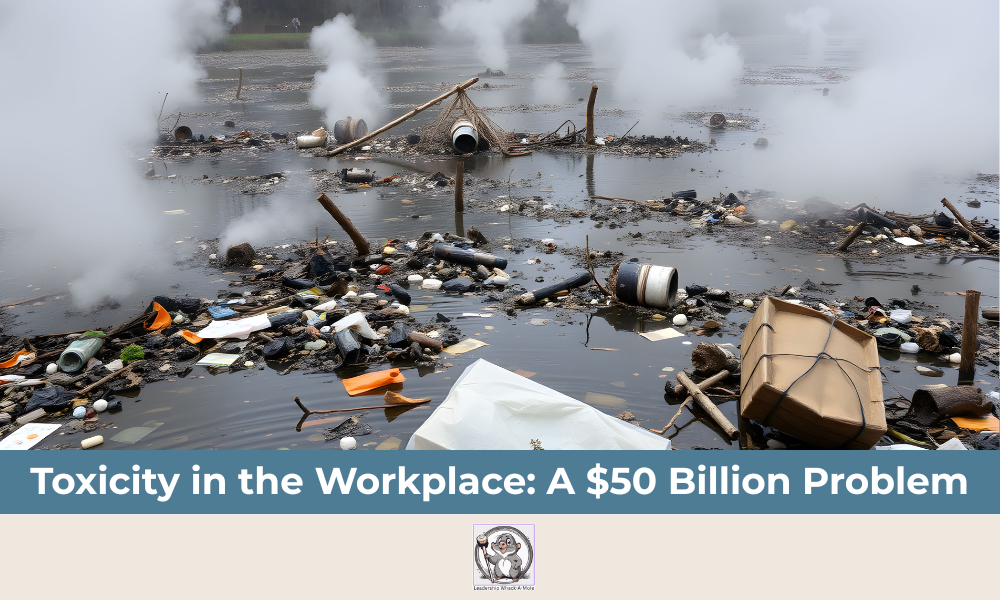
By Jeff Fierstein
Toxicity in the workplace—whether exhibited by managers or peers—is often overlooked in organizational discourse. However, both research and real-world experience consistently highlight its significant impact. When left unaddressed, toxic behaviors can lead to heightened stress, reduced productivity, diminished morale, increased burnout, higher turnover, and even disruptions to employees’ personal lives.
Purushothaman and Stromberg (2022) estimate the cost of U.S. workplace toxicity at $50 billion annually.
Surprisingly, toxic individuals are not always reprimanded; in some cases, they are promoted. This paradox often stems from a focus on performance metrics, where strong individual results may overshadow destructive interpersonal behavior. Toxic traits, especially when subtle or concealed, may go unnoticed by upper management. In other cases, such individuals may be politically savvy enough to deflect criticism or avoid accountability. As one anecdote reveals, a persuasive but manipulative leader maintained their position despite multiple complaints—likely because of their effectiveness or the permissiveness of a toxic organizational culture.
Some leadership experts suggest that toxic behaviors may originate from deeper psychological patterns. Narcissism, for instance, can manifest as a constant need for admiration, grandiosity, and a willingness to manipulate others for personal gain. Individuals with such tendencies are often poor collaborators and may be compensating for underlying insecurities. While not a clinical diagnosis, this perspective may help explain certain destructive leadership styles observed in organizations.
In some companies, toxicity is not isolated to individuals but is woven into the fabric of the culture, starting at the top. When CEOs and senior leaders exhibit toxic behaviors, it sets a precedent throughout the organization. Employees look to leadership for cues on acceptable conduct, and when toxic behavior is normalized at the highest levels, it tends to cascade downward. This environment fosters disengagement and attrition—how many professionals have you known who left a role due to a toxic team or corporate culture? I count myself among them.
Transforming a toxic culture requires commitment from the top. Since culture is shaped and reinforced by leadership, meaningful change must begin there. Unfortunately, many executives are either unaware of their role in perpetuating toxicity or lack the skills to effect change. In such cases, external support through coaching or organizational development consulting is often essential.
While a comprehensive guide to cultural transformation is beyond the scope of this article, some promising approaches include individualized coaching for toxic leaders, facilitated discussions between management and staff, team-based norm-setting sessions, and establishing clear behavioral expectations across the organization.
Addressing toxicity is not just a matter of improving morale—it’s essential to the long-term health and success of any organization.
For a detailed discussion of workplace and leader toxicity, see the book Leadership Whack-A-Mole: Actionable Strategies for Leadership Challenges. (c) 2024 Ric Shriver and Jeff Fierstein. Click on the banner below.
We’d love to hear your thoughts and experiences with toxic people and workplaces. Leave a Comment below.




